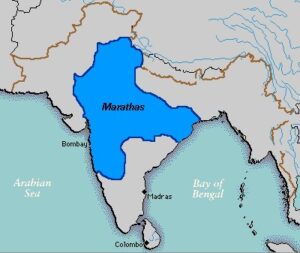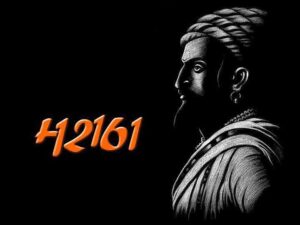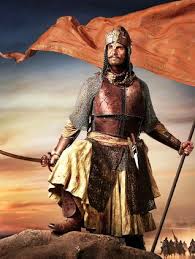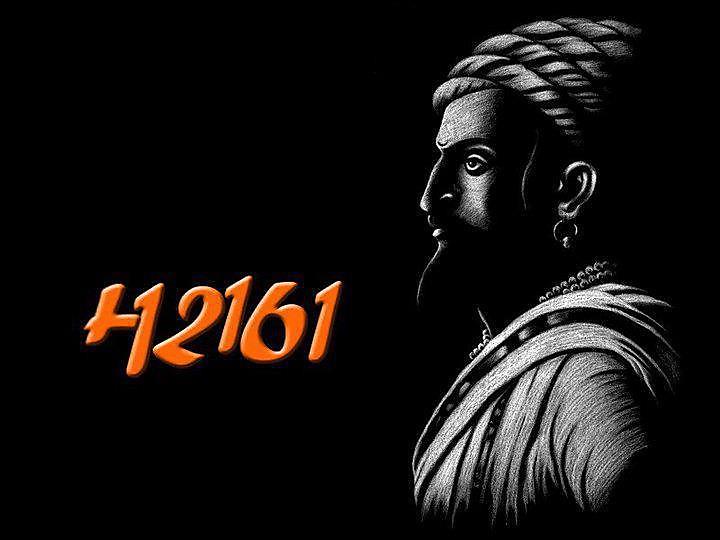MARATHA EMPIRE
 Maratha Empire
Maratha Empire
- The geographical condition of Maharashtra helped in the rise of the Maratha empire.
- It’s an important episode of Indian history.
- Most of the region of Maharashtra had plateau region plateau also provided a good facility for guerilla-warfare to the Maratha.
- The rise of the Maratha empire was the result of the efforts of the entire Maratha people who on the basis of unity of their languages, literature, community, and homeland gave birth to Maratha nationalism and desired to create an independent state of their own.
- The saints of the Bhakti Movement in Maharashtra had also played an important role.
MARATHA EMPIRE
SHIVAJI –

- Shivaji was born in 1627. In fort of Shivneri
- He was the son of Shahji Bhonsle and Jija Bai.
- Shivaji inherited the Jagir of Poona from his father in 1637.
- After the death of his guardian, Dadaji Kondadev, in 1647, he assumed full charge of his Jagir.
- His guru was Ramdas Samrath
- He conquered many Forts viz.,Singh Garh/ Kondana (1643), Rohind and Chakan (1644-45), Toran (1646), Purandhar (1648), Rajgarh/ Raigarh (1656), Supa (1656), Panhala (1659).
- In 1657 Shivaji first confronted the Mughals, talking advantage of the Mughal invasion of Bijapur, he raided Ahamadnagar and plundered Junnar.
- In 1659-60, Afzal Khan was deputed by Adil Shah of Bijapur to punish Shivaji; but the later Afzal Khan was murdered by Shivaji in 1659. The famous ―baghnakh‖ episode is related with the death of Afzal Khan.
- In 1660, Shaista Khan, governor of Deccan, was deputed by Aurangzeb to check Marathas. Shivaji lost Poona, Kalyan and Chakan also suffered several defeats till he made a bold attack on Shaista Khan(1663) and plundered Surat (1664) and later Ahmadnagar.
- Raja Jai Singh of Amber and Diler Khan were then appointed by Aurangzeb to curb the rising power of Shivaji in 1665.
- Jai Singh succeeded in besieging Shivaji in the fort of Purandhar. Consequently the treaty of Purandhar (1665) was signed according to which Shivaji ceded some forts to the Mughals and paid a visit to the Mughal court at Agra.
- 1666, Shivaji visited Agra but there he was insulted.
- 1670, Shivaji captured most of the forts lost by the treaty of Purandhar.
- 1674 Shivaji was coroneted at capital Raigarh and assumed the title of Haindava Dharmodharak (Protector of Hinduism).
- After that Shivaji continued the struggle with Mughals and Siddis (Janjira). He conquest Karnataka during 1677-80.
- His last expedition was against Ginjee and Vellore.
SHIVAJI ADMINISTRATION-
- The administrative system was largely borrowed from the administrative practices of the Deccan state.
-
Central Administration-
The administration was divided into eight departments headed by ministers who are some times called “Ashta pradhan.” They are-
- Peshwa= the finance and general administration.
- Sari naubat = senapati
- Majumdar= Accounts
- Waqai navis = intelligence and house holds.
- Surnavis or Chitnis = official correspondence
- Dabir or sumant = foreign minister
- Nyayadish = justice
- Pandit rao = religious affairs.
2.Provincial and Local Administration
- The provinces were known as Prants. The Prants were under the charge of the subedar.
- Over a number of Subedar, there were Sarsubedar to control and supervise the work of the subedar.
- Smaller than prant were Tarfs which were headed by a havaldar.
- There were Mauzas or villages which were the lowest unit of administration.
REVENUE SYSTEM OF MARATHA EMPIRE
- Chauth and Sardeshmukhi were taxes collected by Marathas.
- Chauth was paid to the Marathas so as not be subjected to Maratha raids.
- Sardeshmukhi was an additional levy of 10% on those lands of Maharashtra over which the Maratha claimed hereditary rights, but which formed part of the Mughal Empire.
- Marathi became the official language.
Successors of Shivaji
Shambhaji (1680-1689)-
- Sambhaji, the elder son of Shivaji, defeated Rajaram, the younger son of Shivaji, in the war of succession.
- He provided protection and support to Akbar II, the rebellious son of Aurangzeb.
- He was captured at Sangameswar by a Mughal noble and executed(killed).
Rajaram (1689-1700)-
- He succeeded the throne with the help of the ministers at Rajgarh.
- He fled from Rajgarh to Jinji in 1689 due to a Mughal invasion in which Rajgarh was captured along with Sambhaji‘s wife and son (Shahu) by the Mughals.
- Rajaram died at Satara, which had become the capital after the fall of Jinji to Mughal in 1698.
- Rajaram created the new post of Pratinidhi, thus taking the total number of the minister to nine (Pratinidhi+Ashtapradhan).
Tarabai(1700-1707)-
- Rajaram was succeeded by his minor son Shivaji II under the guardianship of his mother Tarabai.
- Tarabai continued the struggle with Mughals
Shahu (1707-1749)-
- Shahu was released by the Mughal emperor Bahadur Shah.
- Tarabai‘s army was defeated by Shahu at the battle of Khed (1700) and Shahu occupied Satara.
- Shahu‘s reign saw the rise of Peshwas and the transformation of the Maratha kingdom into an empire based on the principle of the confederacy.
Balaji Viswanath (1714-20)=The First Peshwa
- He began his carrier as a small revenue official and was given the title of Sena Karte (a marker of the army) by Shahu in 1708.
- Balaji became Peshwa in 1713 and made the post the most important and powerful as well as hereditary.
- He concluded an agreement with the Syed Brothers-King Maker (1719) by which the Mughal emperor Farrukhsiyar recognized Shahu as the king of the Swarajya.
Baji Rao-I (1720-40)-

- Baji Rao, the eldest son of Balaji Viswanath, succeeded him as Peshwa at the young age of 20.
- He was considered the greatest exponent of guerrilla tactics after Shivaji and Maratha’s power reached its zenith under him.
- Under him, several Maratha families became prominent and got themselves entrenched in different parts of India.
- He conquered Bassein.
- Baji Rao-I also defeated the Nizam-ul-Mulk near Bhopal and concluded the treaty of Doraha Sarai by which he got Malwa and Bundelkhand from the latter (1738).
- Baji Rao-I said about Mughals: Let us strike at the trunk of the withering tree and the branches will fall of themselves‘.
Balaji Baji Rao(1740-61)-
- Popularly known as Nana Saheb, he succeeded his father at the age of 20.
- After the death of Shahu (1749), the management of all state affairs was left in his hands.
- In an agreement with the Mughal emperor Ahmad Shah, the Peshwa was to protect the Mughal empire from internal and external enemies (like Ahmad Shah Abdali) in return for Chauth (1752).
- The third battle of Panipat (Jan 14, 1761) resulted in the defeat of the Marathas by Ahmad Shah Abdali and the death of Viswas Rao & Sadashiv Rao Bhau. This event shocked the Peshwa Balaji Baji Rao and after six months he also died. This battle ended the Maratha power.

